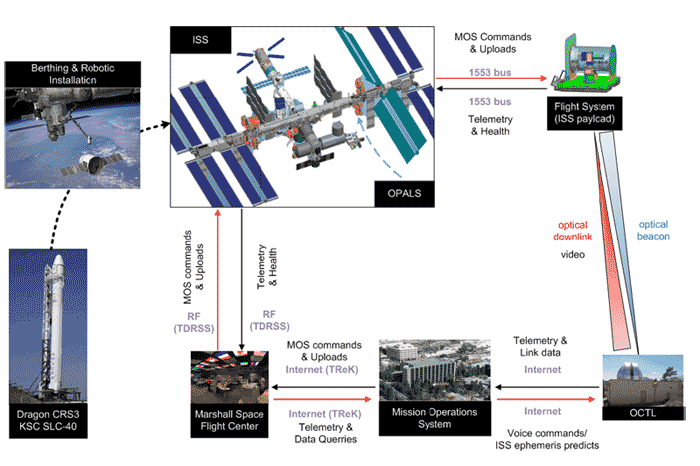 NASA will use the International Space Station to test a new communications technology that it says could dramatically improve spacecraft communications, enhance commercial missions, and strengthen transmission of scientific data.
NASA will use the International Space Station to test a new communications technology that it says could dramatically improve spacecraft communications, enhance commercial missions, and strengthen transmission of scientific data.
The Optical Payload for Lasercomm Science (OPALS), an optical technology demonstration experiment, could improve NASA’s data rates for communications with future spacecraft by a factor of 10 to 100.
OPALS has arrived at NASA’s Kennedy Space Center in Florida from the agency’s Jet Propulsion Laboratory (JPL) in Pasadena, Calif. It is scheduled to launch to the space station later this year aboard a SpaceX Dragon commercial resupply capsule on the company’s Falcon 9 rocket.
Michael Kokorowski (OPALS project manager, JPL): Future operational laser communication systems will have the ability to transmit more data from spacecraft down to the ground than they currently do, mitigating a significant bottleneck for scientific investigations and commercial ventures.
OPALS will be mounted on the outside of the International Space Station and communicate with a ground station in Wrightwood, Calif., a mountain town near Los Angeles.
The OPALS instrument was built at JPL and is slated to fly on the Dragon capsule in late 2013. The mission is expected to run 90 days after installation on the station. The OPALS Project Office is based at JPL, a division of the California Institute of Technology in Pasadena.
[Image courtesy: NASA]

